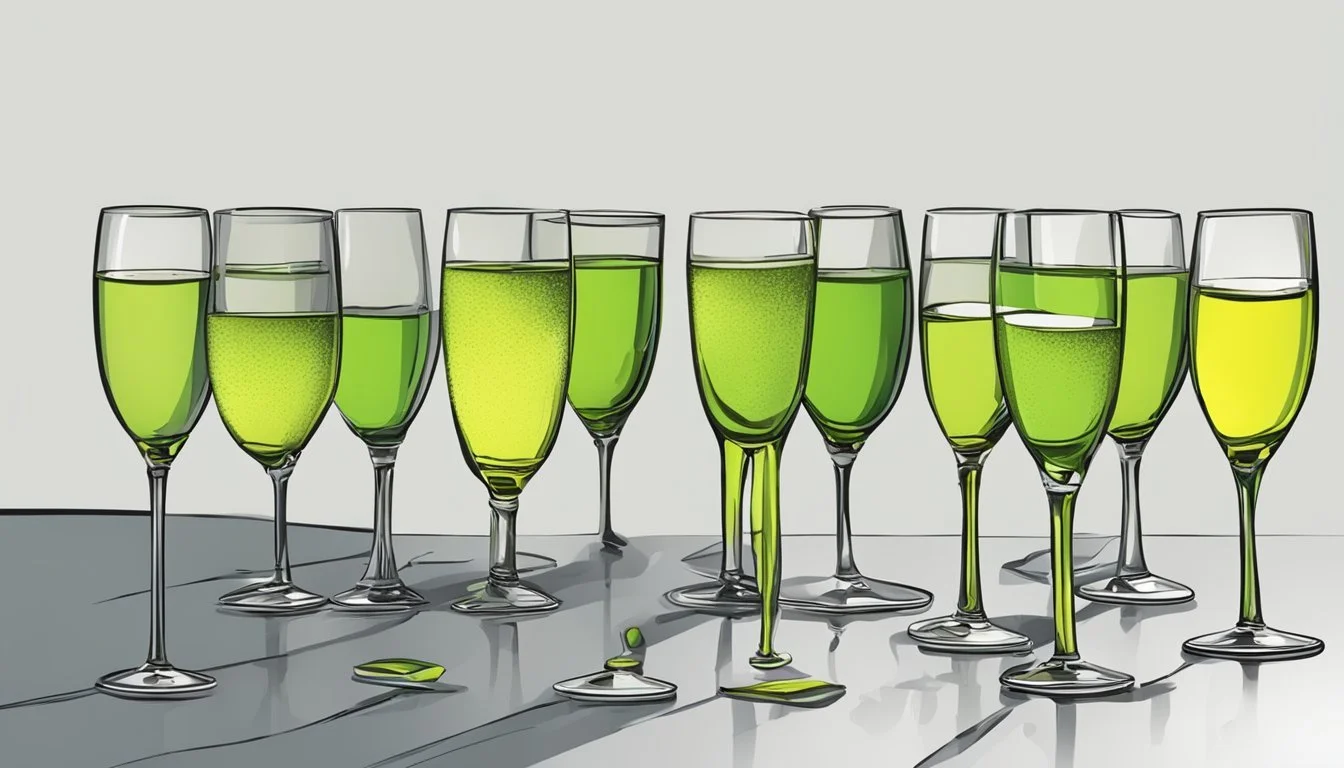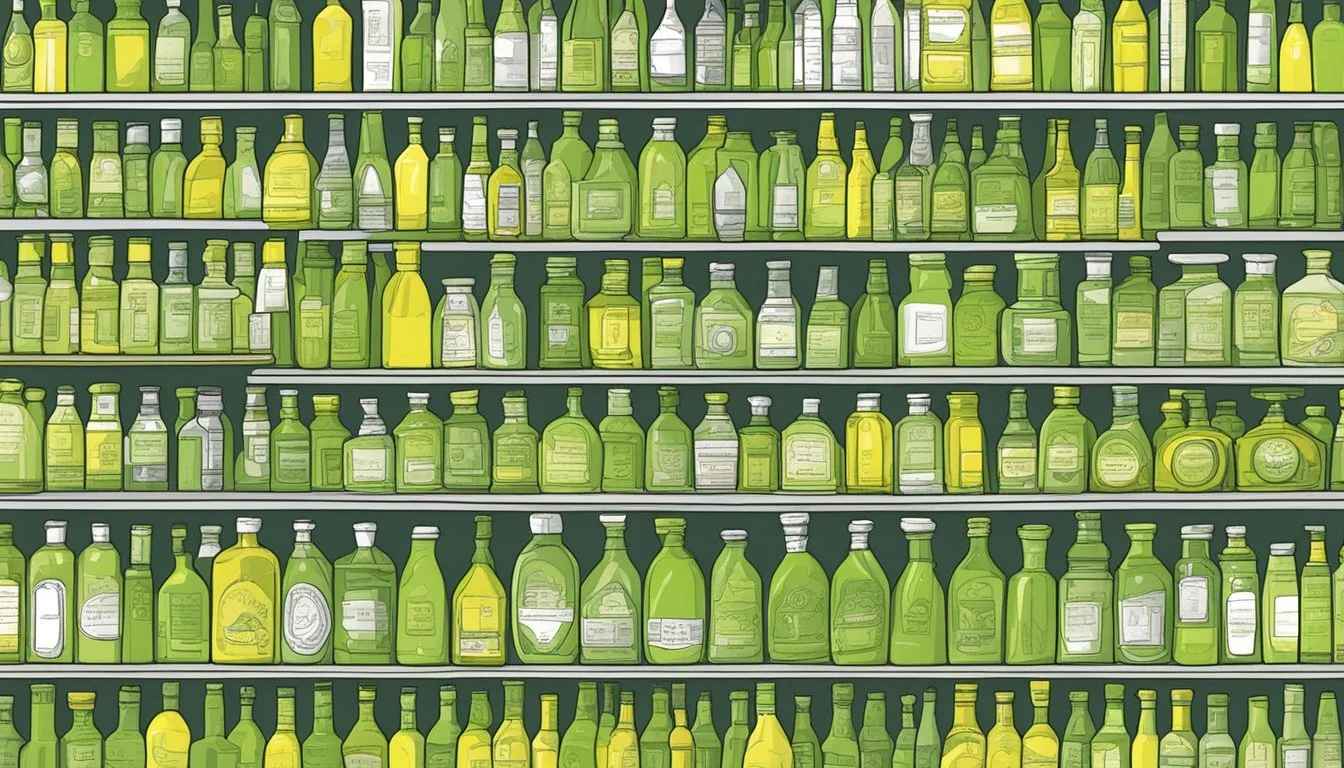How Many Servings of Chartreuse Is Too Much
Understanding Safe Consumption Limits
Chartreuse, a vibrant liqueur produced by Carthusian monks at the Grande Chartreuse monastery in France, is a drink steeped in history. Distilled from a recipe dating back to 1605, Chartreuse has been sought after for its unique flavors and medicinal qualities. Its production is tightly controlled to maintain the monastic balance, contributing to its mystique and scarcity.
When enjoying Chartreuse, moderation is essential. Although a single serving can be a delightful experience, consuming more than two servings per evening can lead to feeling its potent effects uncomfortably. Given its high alcohol content and complex herbal blend, it's crucial to savor this liqueur responsibly.
Understanding the depth of craftsmanship in each bottle, from the carefully guarded recipe to the meticulous production process by the monks, adds to the appreciation of Chartreuse. This precious liqueur deserves to be enjoyed thoughtfully, making each sip a tribute to centuries of tradition.
The History and Origins of Chartreuse
Chartreuse is a unique liqueur with deep historical roots tracing back to Carthusian monks in France. Its history involves monastic traditions and the development of a secret herbal recipe.
Monastic Tradition and the Carthusian Order
Chartreuse was created by Carthusian monks living a secluded monastic life. These monks, who resided in the La Grande Chartreuse monastery near the Chartreuse Mountains in France, dedicated their lives to prayer, study, and the crafting of this herbal liqueur.
The Carthusian Order, established in 1084 by Saint Bruno, maintained strict vows of silence and solitude. This disciplined way of life allowed the monks to focus on perfecting their herbal concoctions. Over centuries, the order became well-known for their botanical expertise, essential for the creation of Chartreuse.
Development of the Secret Recipe
The secret recipe of Chartreuse, said to include 130 different herbs, has been passed down through generations of monks since the 18th century. This recipe is known only to a few selected monks, ensuring its exclusivity and mystery.
Green Chartreuse, the most iconic variant, was first developed in 1840. The complex blend is aged in oak barrels, contributing to its distinctive herbal, medicinal flavor profile. Its creation process is performed under strict secrecy, with each monk sworn to confidentiality. This careful guarding of the recipe has allowed Chartreuse to maintain its unique character and esteemed status among liqueurs.
Understanding Chartreuse
Chartreuse, a unique liqueur with rich history, offers a distinct flavor derived from numerous botanicals. Key differences between its two primary variants, Green and Yellow Chartreuse, impact its uses in cocktails. Consumption approaches vary among drink enthusiasts and bartenders.
The Role of Botanicals
Chartreuse is crafted using a secret recipe comprising 130 botanicals. These herbs, plants, and flowers are meticulously selected and contribute to its complex flavor profile.
The maceration process, lasting eight hours, extracts the essential oils, lending Chartreuse its potent character. Each botanical serves a purpose, complementing or balancing others in the blend.
Understanding this complex interplay of ingredients can enhance appreciation for this storied liqueur.
Green vs. Yellow Chartreuse: A Comparative Analysis
Green Chartreuse has a more intense flavor and an ABV of 55%, making it stronger. Yellow Chartreuse has a milder taste and a lower ABV, often preferred in cocktails requiring subtlety.
While Green Chartreuse stands out in drinks like the Last Word and Bijou, Yellow Chartreuse pairs well with fruitier cocktails such as a modified Piña Colada. The choice between the two significantly influences the final taste and experience of a drink.
Principal Approaches to Chartreuse Consumption
Bartenders offer varied uses of Chartreuse in cocktails, utilizing its unique properties to craft blends. It can be enjoyed neat, over ice, or within a range of intricate recipes.
Notable cocktails include the Naked & Famous, which combines Yellow Chartreuse with lime juice and mezcal, and the Last Word, where Green Chartreuse is mixed with gin and maraschino liqueur. Each approach emphasizes different flavor profiles and intensities.
For casual drinkers, Chartreuse can be sipped slowly to appreciate its herbal complexity.
Production and Craftsmanship
The Carthusian Monks at the Grande Chartreuse Monastery in the French Alps have been perfecting the art of distilling Chartreuse for centuries. This liqueur's complexity and limited production make it a coveted ingredient in craft cocktails.
The Chartreuse Distillation Process
Chartreuse is crafted through a meticulous distillation process, involving 130 different herbs, plants, and flowers. The exact formula is a closely guarded secret known by only a few monks.
Each ingredient is carefully selected and macerated in alcohol before being distilled.
Production occurs at the Grande Chartreuse Monastery, where aging takes place in massive oak casks. The final product matures for several years, allowing flavors to harmonize and develop.
Challenges in Maintaining Traditions
Balancing monastic life with Chartreuse production presents unique challenges. The Carthusian Monks prioritize their spiritual practice and thus limit the quantity they produce.
Moreover, adhering to centuries-old methods can be labor-intensive.
Despite high demand, they resist modernizing the process to ensure the liqueur's authenticity.
This commitment sometimes leads to shortages, impacting its availability in the craft cocktail scene.
Market Dynamics of Chartreuse
The demand for Chartreuse, driven by both its historical significance and unique flavor profile, influences its market dynamics. Shortages significantly impact availability and pricing, while importers play a crucial role in distribution.
Understanding the Demand for Chartreuse
Chartreuse has seen a surge in demand globally. The liqueur's long history and symbolic durability since 1605 contribute to its popularity. Not only is it appreciated for its taste, but it also holds cultural significance. Both Green and Yellow Chartreuse have distinct flavor profiles, with Green being stronger at 55% ABV and Yellow milder at 40% ABV. This distinctiveness adds to its allure.
Additionally, various media outlets like the Wall Street Journal and the New York Times have highlighted the growing interest in Chartreuse. This increasing awareness has resulted in higher demand, sometimes outstripping the available supply. Various factors drive this demand including culinary uses, cocktails popularity, and its esteemed legacy.
How Shortages Affect Availability and Price
Shortages of Chartreuse have become more noticeable recently. The production, controlled by monks who balance monastic life with liqueur-making, is inherently limited. This limited supply cannot keep pace with the growing global demand. Importers such as Frederick Wildman and Sons face challenges in securing enough quantities to meet market needs.
A limited production coupled with high demand leads to price increases. Retailers like Total Wine often experience stock-outs, and when available, Chartreuse is sold at a premium. Green Chartreuse, with its higher alcohol content, sees particularly acute shortages. Thus, scarcity drives prices upwards in secondary markets, impacting consumers and collectors alike.
The Role of Importers in Chartreuse Distribution
Importers are essential in bringing Chartreuse to various markets, especially in the U.S. Frederick Wildman and Sons, a key importer, manages the complex logistics of distribution. Their role involves negotiating with the producers and handling regulatory compliance to ensure availability in stores and restaurants.
Importers coordinate with suppliers to manage distribution networks and maintain stock levels. They also play a pivotal role in educating consumers about Chartreuse's heritage and uses. By marketing and promoting the liqueur, they help sustain demand and manage supply chain intricacies. This delicate balance is crucial to ensuring that Chartreuse remains accessible to enthusiasts despite shortages.
Responsible Consumption of Chartreuse
Chartreuse, known for its unique herbal flavor and vibrant color, is a liqueur with a high alcohol by volume (ABV) of around 55%. This makes mindful consumption essential.
Most bartenders recommend limiting intake to one or two servings in a single evening. Chartreuse can be potent when consumed excessively, and its high ABV can lead to quick intoxication.
In the context of cocktail culture, Chartreuse is often used in small quantities to enhance flavors. Classic cocktails like the Last Word or Bijou only require a small amount, usually 1/2 to 3/4 ounce per drink.
People should also consider health factors. Overconsumption of high-ABV liqueurs like Chartreuse can have negative effects on liver health and contribute to other alcohol-related risks.
Below is a quick guide to help in responsible consumption:
Consumption Tip Details Serving Size 1-1.5 ounces per serving Cocktail Use Small quantities (1/2 to 3/4 ounce) Frequency Limit to 1-2 servings per evening Mixing Awareness Avoid mixing with other high-ABV drinks
By adhering to these guidelines, one can enjoy Chartreuse's complex flavors without compromising on responsible behavior. It is crucial to always drink mindfully and be aware of personal limits.







